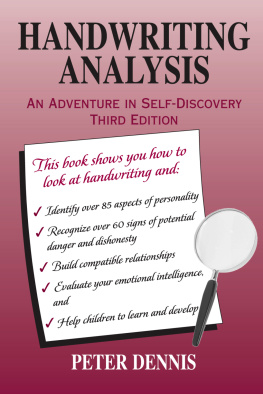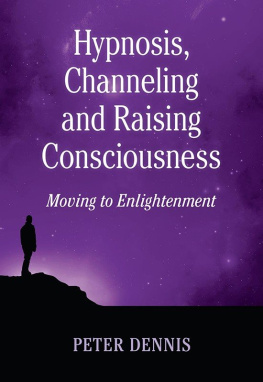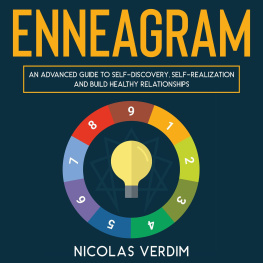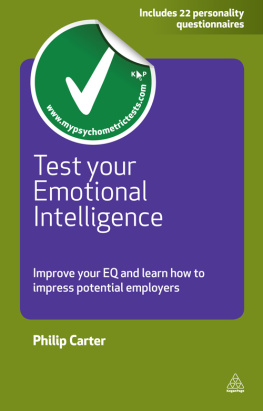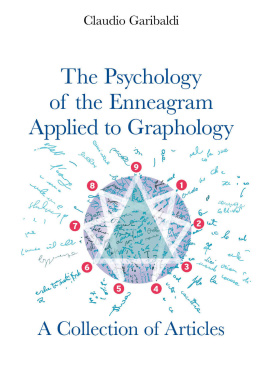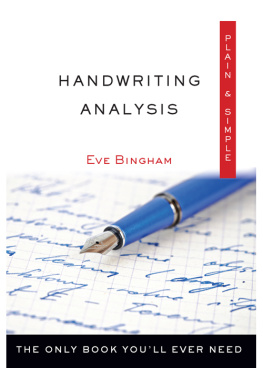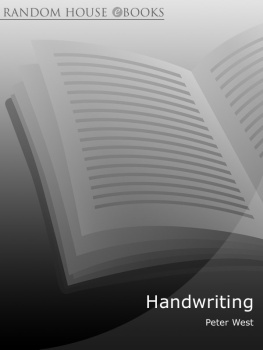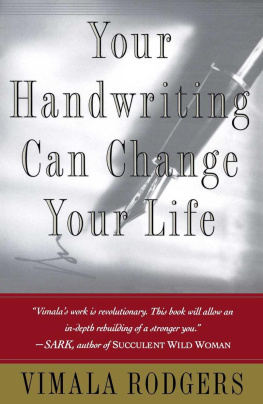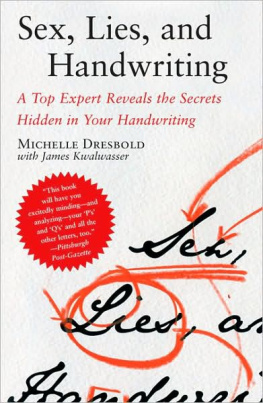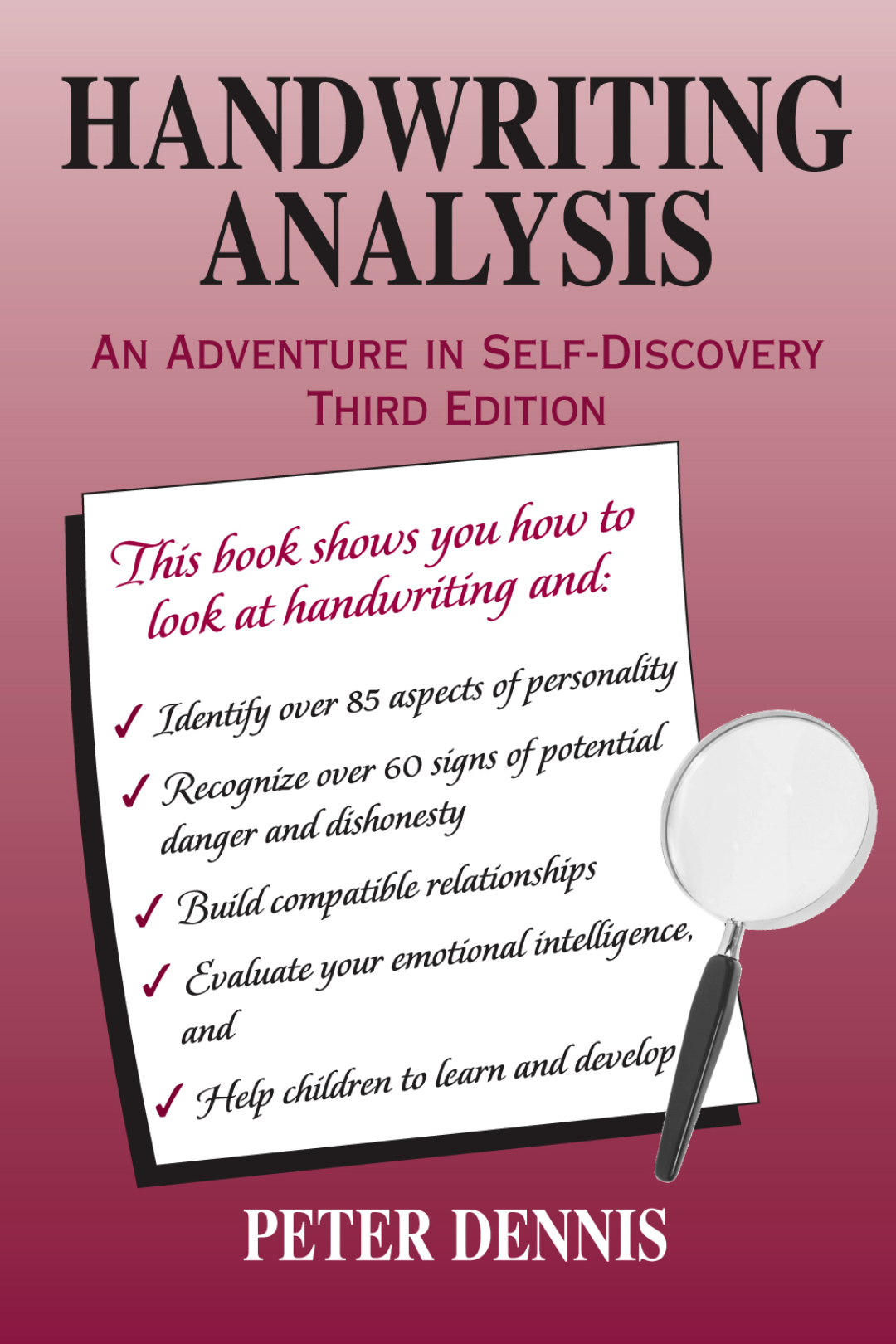Peter Dennis - Handwriting Analysis: An Adventure in Self-Discovery
Here you can read online Peter Dennis - Handwriting Analysis: An Adventure in Self-Discovery full text of the book (entire story) in english for free. Download pdf and epub, get meaning, cover and reviews about this ebook. year: 2016, publisher: Peter Dennis, genre: Home and family. Description of the work, (preface) as well as reviews are available. Best literature library LitArk.com created for fans of good reading and offers a wide selection of genres:
Romance novel
Science fiction
Adventure
Detective
Science
History
Home and family
Prose
Art
Politics
Computer
Non-fiction
Religion
Business
Children
Humor
Choose a favorite category and find really read worthwhile books. Enjoy immersion in the world of imagination, feel the emotions of the characters or learn something new for yourself, make an fascinating discovery.
- Book:Handwriting Analysis: An Adventure in Self-Discovery
- Author:
- Publisher:Peter Dennis
- Genre:
- Year:2016
- Rating:4 / 5
- Favourites:Add to favourites
- Your mark:
Handwriting Analysis: An Adventure in Self-Discovery: summary, description and annotation
We offer to read an annotation, description, summary or preface (depends on what the author of the book "Handwriting Analysis: An Adventure in Self-Discovery" wrote himself). If you haven't found the necessary information about the book — write in the comments, we will try to find it.
Have you ever thought about how helpful it would be if you could get an accurate profile of someones personality? How many ways could you use this information?
This book leads you through not only how Handwriting Analysis, known as Graphology, can get you such a profile but it shows you how Graphology can be applied in many different circumstances. For example, Graphology can help with personnel selection or picking a mate. Some of the authors clients have used Graphology to check loan applicants, apartment renters, children with learning disabilities, negotiations, and the list goes on... anything relating to personality, others and, perhaps, best of all, your own personality.
Handwriting Analysis: An Adventure in Self-discovery is in its 3rd edition and to produce the 2nd and 3rd editions, chapters have been added about Relationships and Compatibility; Emotional Intelligence; Kids, Teachers, and Parents; and a final chapter has been added to show how ones Handwriting can reveal over 60 different signs of potential danger and dishonesty. As well, this book features illustrations and worksheets that easily lead the reader to produce a comprehensive profile of anyones personality.
This book has been used in classrooms, at the college level and it is an excellent reference for the experienced Graphologist.
Some Reviews:
This book on Handwriting Analysis is more than a basic introduction. It offers straightforward information that is well explained and categorized. The additional chapters are as articulate and even more intriguing. While some books contain only enough information to tease and others give so much detail you're confused, this one is truly helpful. I frequently use it as a reference and am still surprised at how easy it is to use.
Carmen Kirschling, President of The Ontario Chapter of The International Graphoanalysis Society.
Handwriting Analysis: An Adventure in Self Discovery is truly an adventure in self-discovery. The material is a clear and concise course in handwriting analysis. The organization is excellent; I particularly like how each characteristic is interpreted, both in its positive and negative aspects. Also, the various worksheets are excellent tools that facilitate interpretation. As well, the sections on kids and the signs of dishonesty are priceless additions. A valuable addition is the section on determining emotional intelligence, an often ignored, but very important understanding of self and of others. This book is one of the several books that I keep within reach and use quite frequently when I'm doing an analysis.
Len Ryan, Vice President of the Ontario Chapter of the International Graphoanalysis Society.
Having just finished teaching an accredited Ontario College, Introductory course in Handwriting Analysis to mostly Law and Security students, I can say that the choice of using Peter Dennis's book, Handwriting Analysis, An Adventure in Self-discovery, as our main reference text was a resounding success. The students said they liked the book and found it easy to read and understand; and from the dogged-eared look of some of them by the end of the course - proved that they were well read.
Paul Boivin, Certified Handwriting Analyst, NLP Trainer, President of Paul D. Boivin + Associates.
I can't say enough about this book. Being very basic, it is terrific as a guide to my beginner course. It is clear and concise, and very easy for non-handwriting analysts to understand. In addition, it covers different subjects such as compatibility in relationships, children, and how we can help them learn and develop, as well as learning about our emotional...
Peter Dennis: author's other books
Who wrote Handwriting Analysis: An Adventure in Self-Discovery? Find out the surname, the name of the author of the book and a list of all author's works by series.

